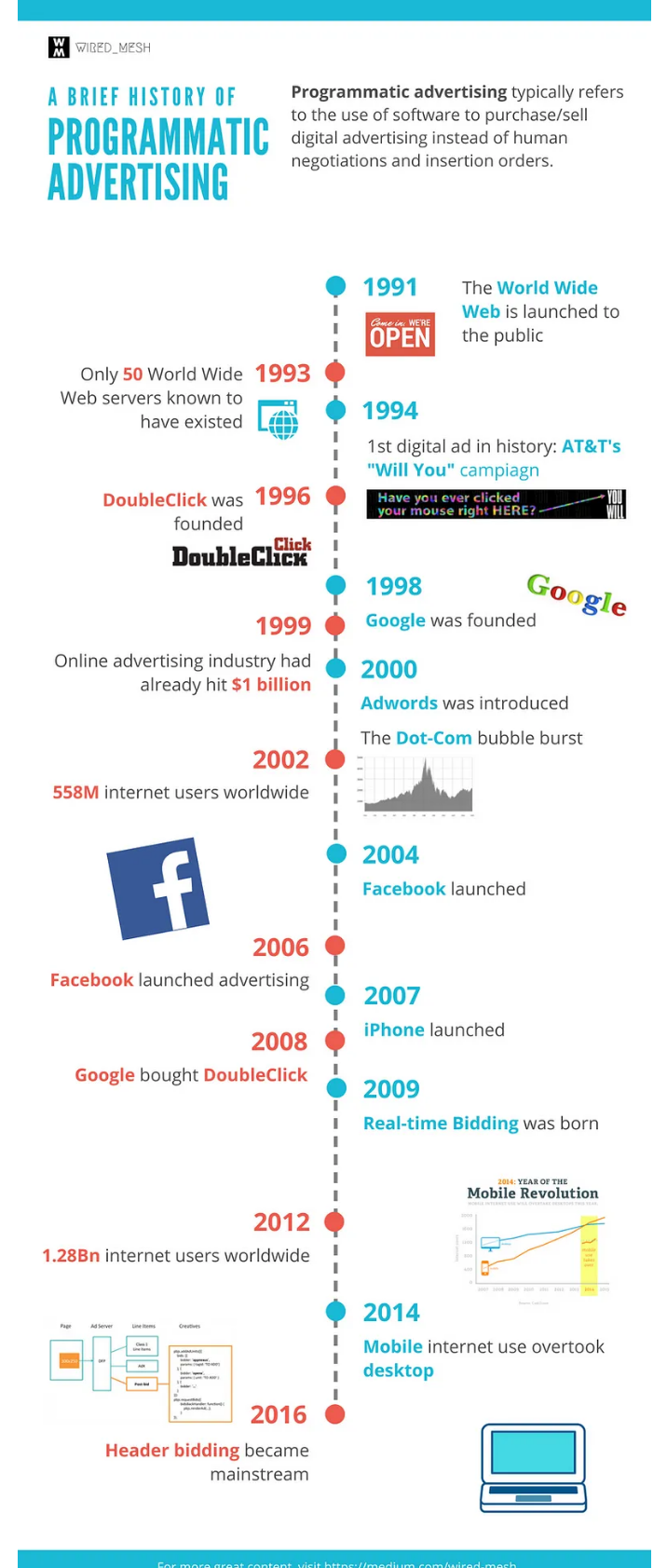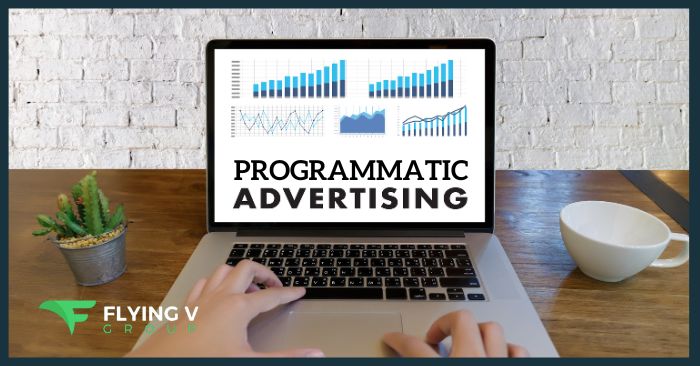When did programmatic advertising start? If you’re a beginner advertiser, understanding the complex history of programmatic advertising can be daunting.
This guide traces programmatic advertising’s roots, starting with HotWired’s first banner ad in 1994, through the rise of ad servers like DoubleClick in 1996, to the game-changing launch of Google AdWords in 2000.
These milestones culminated in the late 2000s with the advent of programmatic advertising, marrying automation with data-driven precision.
Grasping this evolution is key to mastering today’s digital advertising landscape, turning beginners into informed, strategic advertisers.
- When Did Programmatic Advertising Start: The Era of Programmatic Advertising (2013-Present)
- When Did Programmatic Advertising Start: The Dawn of Digital Advertising (Pre-Programmatic Era)
- Current State and Future Trends in Programmatic Advertising
- Don’t Get Left Behind in the Programmatic Revolution
- FAQs
- When did programmatic advertising become popular?
- When did digital advertising become popular?
- When did programmatic advertising start?
- How has programmatic changed the ad industry?
- Why is the period from 1960-80 called the golden age of advertising?
When Did Programmatic Advertising Start: The Era of Programmatic Advertising (2013-Present)
Google AdSense: Catalyzing the Programmatic Movement
The introduction of Google AdSense in 2013 was a pivotal moment in the evolution of digital advertising.
AdSense expanded upon the existing advertising infrastructure by allowing website owners to easily monetize their sites through access to Google’s vast network of advertisers.
This platform was instrumental in popularizing programmatic advertising automating online ad space buying and selling using sophisticated algorithms.
The Rise of Programmatic Advertising Platforms
Google’s dominant position in the search engine market played a significant role in the ascent of programmatic advertising.
The company’s vast data resources and technological prowess provided the perfect environment for developing and refining programmatic platforms.
These platforms could leverage data analytics and machine learning to optimize ad placements in real-time, making advertising more efficient and effective.
Impact and Advancements in Programmatic Advertising
Since its inception, programmatic advertising has transformed the digital ad landscape. It has allowed for more precise targeting and personalization, higher efficiency in ad spend, and improved measurement and analytics capabilities.
The ability to automate ad transactions has also opened up new opportunities for advertisers and publishers alike, making it easier to manage and scale campaigns.
The Ongoing Evolution of Digital Advertising
The current era continues to witness advancements in programmatic advertising, with emerging technologies like artificial intelligence and real-time bidding further enhancing its capabilities.
This ongoing evolution signifies a shift towards more dynamic, data-driven, and user-focused advertising strategies, shaping the future of digital marketing.
When Did Programmatic Advertising Start: The Dawn of Digital Advertising (Pre-Programmatic Era)

First Banner Ad (1994): HotWired’s first banner ad marked the start of digital advertising, initially attracting high engagement due to its novelty.
User Engagement Shift: Over time, as the internet audience expanded and ads became commonplace, ‘banner blindness’ emerged, with users starting to ignore banner-like information.
Ad Servers and DoubleClick (1996-1999): DoubleClick’s launch in 1996 revolutionized ad management, introducing efficiency and scalability in digital ad campaigns. This era marked a shift towards more targeted, data-driven advertising strategies.
Google AdWords and the PPC Model (2000-2012): Google AdWords, launched in 2000, democratized digital advertising with its user-friendly PPC model. Google’s 2007 acquisition of DoubleClick further enhanced ad targeting and performance analysis.
Towards Automation and Programmatic Advertising: This period saw a gradual shift to automated, data-driven advertising, setting the stage for the rise of programmatic advertising, emphasizing algorithms and machine learning in ad buying and placement.
Current State and Future Trends in Programmatic Advertising
The Present Landscape of Programmatic Advertising
Today, programmatic advertising stands as a cornerstone of digital marketing. It has evolved to encompass a wide range of formats, including display, mobile, video, and even audio advertising, each leveraging advanced targeting and real-time bidding technologies.
The integration of rich data analytics allows for unprecedented levels of personalization and efficiency, making ads more relevant and engaging to consumers.
Technological Innovations Driving Change
The latest advancements in programmatic advertising are primarily driven by technologies like artificial intelligence (AI) and machine learning.
These technologies enable more sophisticated audience segmentation, predictive analytics, and automated decision-making, enhancing the effectiveness of ad campaigns.
Additionally, the rise of privacy-focused regulations and the gradual phasing out of third-party cookies are pushing the industry towards more privacy-conscious advertising methods.
The Future of Programmatic Advertising
Looking ahead, the future of programmatic advertising is likely to be shaped by continued technological innovation. Integrating AI and machine learning is expected to become more refined, leading to smarter and more adaptive advertising strategies.
This could include more nuanced and dynamic personalization and improved measurement and attribution models.
Emerging Trends and Possibilities
Future trends in programmatic advertising include the increased use of augmented reality (AR) and virtual reality (VR) in ads, offering immersive and interactive experiences to users. Additionally, the Internet of Things (IoT) growth presents new avenues for context-aware advertising, where ads can be tailored based on real-time environmental and usage data.
Adapting to a Changing Landscape
As the programmatic advertising landscape evolves, businesses and marketers must stay agile and informed. Embracing the latest technologies while being mindful of privacy concerns and regulatory changes will be key to leveraging the full potential of programmatic advertising in the years to come.
Don’t Get Left Behind in the Programmatic Revolution
The leap from the first banner ads to the current era of programmatic advertising marks a pivotal change in marketing.
Being left behind in understanding this shift can mean missing out on key opportunities. Flying V Group is your gateway to staying ahead.
We offer the knowledge and tools necessary for grasping these changes, ensuring you are at the forefront of the advertising evolution. Join us, and be part of the cutting-edge wave of digital marketing success.
FAQs
When did programmatic advertising become popular?
Programmatic advertising gained popularity around 2013. This surge in popularity coincided with advancements in technology and data analytics, allowing for more efficient and targeted ad placements.
When did digital advertising become popular?
Digital advertising began gaining significant popularity in the late 1990s and early 2000s, particularly with the rise of the internet and online platforms.
When did programmatic advertising start?
Programmatic advertising started in 2013 with the launch of Google AdSense, marking a significant shift towards automated online ad buying and selling processes.
How has programmatic changed the ad industry?
Programmatic advertising revolutionized the ad industry by introducing automation, data-driven targeting, and real-time bidding, making ad campaigns more efficient, effective, and personalized.
Why is the period from 1960-80 called the golden age of advertising?
The period from 1960-80 is known as the golden age of advertising due to the creative revolution in ad content, the rise of iconic campaigns, and significant growth in the influence and reach of advertising.






0 Comments